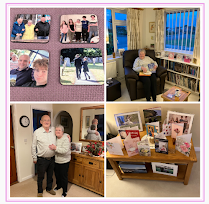A couple
more books have been listed on eBay this afternoon which may be of interest to readers. They are the RSGB's latest
VHF/UHF handbook and the
Backscatter Technical Compendium with articles from Backscatter (UK Microwave Group) from 2004-2008. The auction ends next weekend.
I have an almost complete set of SPRATs from the early 1980s to today
that may be listed soon: as I have the CD, the paper copies are taking
up shelf space. Paper copies are easier to thumb through though, so I
may decide to keep these. We'll see.

There are a few other books and some baby clothes too if you, or your XYL, are interested. My aim is to declutter the shack as much as I can before the house move. The other books include some on disability related subjects, psychology
and the Galapagos Islands (the latter is a very nice BBC book).
Last week's auction was very successful with all the books (and the fireplace surround!) finding new homes.
eBay is quite fun in small doses: I don't like to do this all the time - too much trouble packaging and labelling things and making the trip to the post office to send them off, but from time to time it is fun, especially watching the last minute rushes!
More books, including a few more obscure non radio related ones, will be listed next month.



 There are a few other books and some baby clothes too if you, or your XYL, are interested. My aim is to declutter the shack as much as I can before the house move. The other books include some on disability related subjects, psychology
and the Galapagos Islands (the latter is a very nice BBC book).
There are a few other books and some baby clothes too if you, or your XYL, are interested. My aim is to declutter the shack as much as I can before the house move. The other books include some on disability related subjects, psychology
and the Galapagos Islands (the latter is a very nice BBC book).



